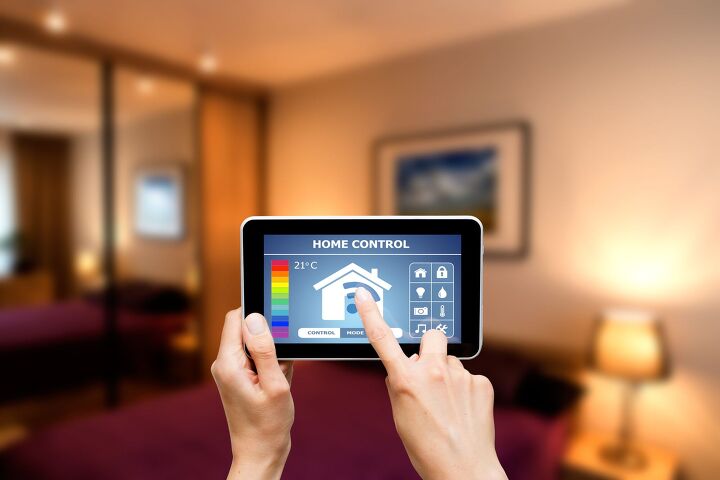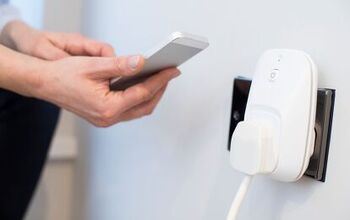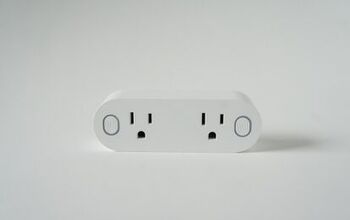How To Turn Your Home Into A Smart Home

There has never been a time when more advanced smart devices are available for homeowners.
Such devices make it easy to keep a clean and comfortable home and alleviate homeowners of many responsibilities. So, what is the best way to turn your home into a smart home?
The best way to turn your home into a smart home is to install smart thermostats and use Amazon Alexa.
Put Wi-Fi-enabled bulbs in your light fixtures and install smart cameras inside and outside your home that you can control with your phone.
Smart TVs, sprinkler systems, and vacuums can also help turn your home into a smart home.
Smart smoke and carbon monoxide detectors can also work with your smartphone and give you peace of mind. You don’t have to spend a fortune when you upgrade your home with smart devices to make your life easier.
Follow along as we explore how to turn your home into a smart home.
How Can I Turn My Normal Home Into A Smart Home?
You can turn your normal home into a smart home with a few simple purchases. Smart TVs, cameras, thermostats, and even vacuums can significantly upgrade your home.
Smart homes require many devices that help alleviate your stress and do the work for you.
For example, smart vacuums can make it much easier to clean your home and save time. They even have smart sprinkler systems that make it easier than ever to take pride in your yard.
Let’s take a look at the best ways to turn your home into a smart home.
1. Alexa
Amazon Alexa is the most essential item that can turn your home into a smart home. This device provides access to endless information as long as you have an Internet connection.
You can connect your Alexa to other smart devices, such as compatible cameras and smart thermostats.
Connect your music streaming services to your Alexa to listen to music. You can modify the voice command options for your Alexa so that it’s as easy for you to control.
Improve the range of your Amazon Alexa with additional Echo Dots throughout your home. This will let you enjoy the benefits of Alexa from anywhere in your house.
Upgrade to the Amazon Display for $70 if you want to see a video display. Alexa doesn’t require a monthly subscription fee, but you can access more features if you are an Amazon Prime subscriber.
2. Smart TVs
Smart TVs are the gold standard now and have never been more affordable. In many cases, they used to cost thousands of dollars, but now the average smart TV costs roughly $650.
While that is still a lot of money, it is reasonable considering how much you can do with a smart TV.
You immediately get access to every major streaming service and can still retain a cable or satellite subscription. It’s possible to link your other smart devices with a smart TV as well, such as smart speakers and even security cameras.
Smart TVs can last up to 7 years or more, and they’re essential if you want to turn your house into a smart home.
3. Security Cameras
Not only do security cameras provide peace of mind, but they can also bring your home into the future. Companies like Ring, Nest, and Wyze make monitoring the inside and outside of your home easy.
Smart security cameras are particularly useful if you have pets that you want to keep an eye on while you are away from home.
You can monitor your smart camera from a phone or tablet in most cases if you download the app. Security cameras used to cost a fortune, but now smart Nest cameras start at $100.
4. Smart Thermostat
It’s easy to overlook thermostats when you start the process to turn your home into a smart home. However, a smart thermostat is just as important as a TV or security system.
Brands like Honeywell and Nest produce outstanding smart thermostats.
The key difference between standard and smart thermostats is their special features. For example, you can control a smart thermostat with voice commands or with an app on your phone.
That way, you can alter your home’s temperature from any room in the house or even if you are away from home.
5. Robot Vacuum
Robot vacuums, such as the Roomba and Ionvac, can make life around the house much easier. The main appeal of a smart home is that you have to do less work, and robot vacuums are a great example of this.
You simply place the robot vacuum on the ground, turn it on, and let it work its magic.
They are especially useful for pet owners who struggle to keep up with loose hair messes. Smart vacuums don’t always reach every nook and cranny because of their circular shape.
Because of that, you will want to supplement with a standard vacuum from time to time.
6. Wi-Fi LED Bulbs
Wi-Fi-enabled LED bulbs can help transform your house into a smart home. You can control the bulbs from your smartphone to turn them on and off.
Many smart bulbs also let you change the color and temperature of the bulb to alter the mood of a room.
They are also quite cheap and last much longer than standard incandescent and fluorescent bulbs. A pack of 4 Wi-Fi smart bulbs typically costs under $30.
Otherwise, you can expect to spend $7-$10 per smart bulb if you buy them individually.
7. Carbon Monoxide And Smoke Detectors
Carbon monoxide and smoke detection are of the utmost importance in any home. There is no reason that your carbon monoxide and smoke detectors shouldn’t be as advanced as your TV.
You can find a combined detector for $90 that picks up on smoke and carbon monoxide.
Otherwise, you can purchase individual Wi-Fi-enabled detectors for each. However, nothing says smart home more than packing as much function into a single device as possible.
Smart detectors send a notification to your phone when they detect smoke and or carbon monoxide. This is infinitely useful if you are out of the room or away from your home.
8. Smart Sprinkler System
It’s easy to overlook sprinkler systems when you upgrade your home. However, smart sprinkler systems make it easier to maintain a lush and beautiful lawn.
Smart systems can quickly adapt to weather and temperature changes that a standard system won’t notice.
You can also tether your smart sprinkler system to your phone so that you monitor and control it remotely. Smart systems can also help to conserve water and reduce your bills.
That is because they will automatically detect rain and shut off the system so that they don’t waste water.
You can convert many existing sprinkler systems to smart systems for $300 or less. Smart sprinkler systems save up to 50% more water, which is worth the cost, especially during the spring and summer.
How Much Does It Cost To Make Your House A Smart Home?
It costs an average of $4,000 to make your house a smart home, but it varies. For example, you could spend as little as $1,500 to upgrade to smart thermostats, cameras, and smoke detectors.
You can expect to spend at least $2,000-$6,500 if you need to buy multiple smart TVs and light fixtures.
Many smart devices cost much less than you would think, such as sprinkler systems. It only costs $300 to upgrade to a smart sprinkler system for your home, and it’s worth the cost.
Smart security systems can cost $1,000 or more depending on how big your house is.
Smart bathrooms are the new trend when it comes to upgrading your house to become a smart home. A smart shower can cost as much as $4,500, and smart mirrors cost up to $1,250.
You can expect to spend as much as $2,750 to upgrade to a smart toilet, or as little as $500.
Summing It Up
Amazon Alexa is the easiest way to turn your home into a smart home.
The video display version of Alexa costs just under $70 and is even more advanced. Smart TVs are the modern standard for home entertainment, and you can expect them to last for at least 7 years.
Upgrade to a smart sprinkler system so that it can detect weather and temperature changes. A smart sprinkler system will adapt to rain and temperature changes, and you can control it from your phone.
Companies like Nest make smart cameras and thermostats that can make your home much more advanced.
Roomba robot vacuums let you clean your home without having to lift a finger. Wi-Fi LED bulbs can connect to your smartphone so that you can control the color and temperature or turn them off.
It costs an average of $4,000 to turn your home into a smart home, but it can cost over $6,500.
Related Guides

Nick Durante is a professional writer with a primary focus on home improvement. When he is not writing about home improvement or taking on projects around the house, he likes to read and create art. He is always looking towards the newest trends in home improvement.
More by Nick Durante



























